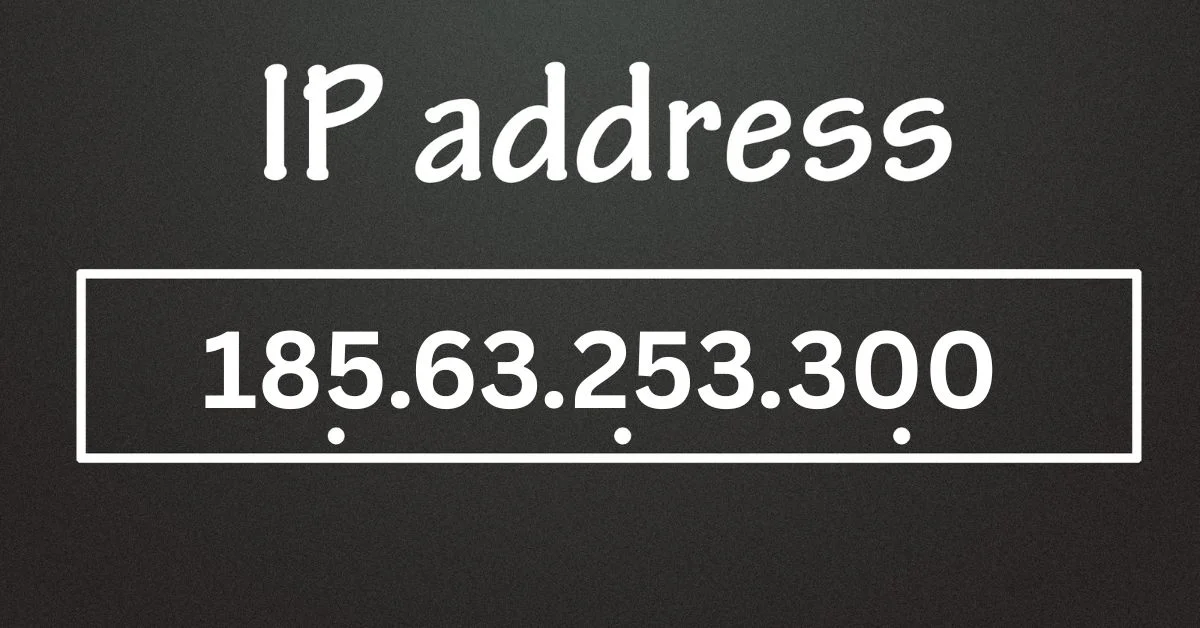Introduction
When browsing the web, encountering an IP address like 185.63.253.300 might raise some questions.
Is it safe? Is it real? Should you be concerned?
In this article, we’ll uncover the truth about 185.63.253.300, explain why it’s technically incorrect, and guide you on what steps to take if you come across it.
Understanding IP Addresses
Before diving into it specifically, it’s important to understand what an IP address isIP (Internet Protocol) addresses are numerical labels assigned to each device connected to a network.
They help computers identify and communicate with each other.
There are two types of IP addresses:
- IPv4 (e.g., 192.168.0.1)
- IPv6 (e.g., 2001:0db8:85a3:0000:0000:8a2e:0370:7334)
An IPv4 address consists of four numbers separated by dots. Each number (called an “octet”) must be between 0 and 255.
What is 185.63.253.300?
At first glance, it looks like a typical IPv4 address.
However, there’s a critical issue — the last octet “300” exceeds the maximum value allowed (255) in an IPv4 address.
Important points:
- It is technically invalid.
- It cannot be assigned to any device or server.
- It might appear due to a mistyped address, spam attempts, or malicious scripts.
In short: 185.63.253.300 is not a valid or functional IP address.
Why 185.63.253.300 is Not a Valid IP Address
Here’s a deeper look at why this address cannot exist:
Technical Rules for IPv4:
- IPv4 addresses use four octets.
- Each octet must be a number between 0 and 255.
- Example of a valid IP: 185.63.253.123
Since 300 > 255, 185.63.253.300 violates this basic rule. Therefore, no legitimate server, device, or website could ever operate under this IP.
Possible scenarios where you might see 185.63.253.300:
- Typographical errors in URLs or network configurations.
- Malicious redirect attempts by cybercriminals.
- Placeholder IPs in spam or phishing emails.
Common Reasons for Seeing 185.63.253.300
Encountering an invalid IP like 185.63.253.300 can happen for several reasons:
1. Typographical Mistakes
Sometimes, human error during manual entry causes mistyped addresses.
2. Spam or Phishing Campaigns
Scammers often use fake or broken IP addresses in phishing emails to confuse users.
3. Poorly Configured Systems
Misconfigured servers or applications may incorrectly output invalid IPs during errors or logs.
4. Placeholder Data
During testing, developers sometimes use non-routable or invalid IPs as placeholders.
How to Handle Invalid IP Addresses
If you come across an IP address like 185.63.253.300, here’s what you should do:
- Double-Check the Source: Always verify if the IP was manually entered or embedded in a suspicious message.
- Avoid Clicking on Links: If the IP appears in emails or messages, treat it with caution.
- Report Suspicious Activity: If linked to phishing or spam, report it to your email provider or cybersecurity team.
- Use Tools to Verify IPs: Platforms like ARIN Lookup or Whois can help validate real IP addresses.
Trusted Resources:
- ARIN Whois Database
- IPinfo Lookup
Conclusion
While it may seem like just another string of numbers, 185.63.253.300 actually highlights an important lesson in cybersecurity and online awareness.
It’s not a valid IP address — and recognizing such anomalies can help protect you from scams, phishing attempts, and technical errors.
FAQs
Q1. Is 185.63.253.300 a real IP address?
A: No, it is not valid because the octet 300 exceeds the limit of 255.
Q2. Should I be concerned if I see 185.63.253.300?
A: Not always, but it’s wise to verify the context. If seen in suspicious emails, treat it cautiously.
Q3. Can hackers use fake IP addresses like 185.63.253.300?
A: Yes, hackers sometimes use invalid IPs in phishing attempts to mask their real activities.
Q4. How can I check if an IP is real?
A: Use tools like ARIN Whois Lookup or consult your IT administrator.









